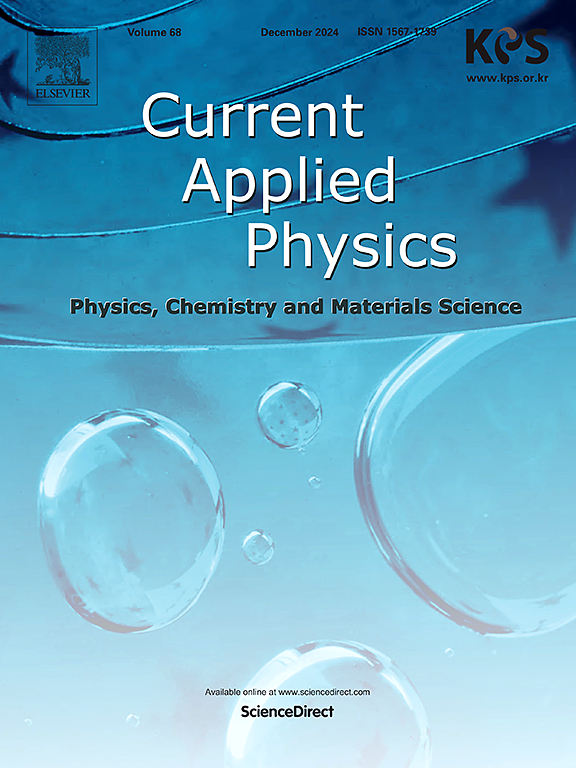用固态自旋量子位元进行磁场介导的温度传感:用永磁体进行混合量子测温的建议
IF 3.1
4区 物理与天体物理
Q3 MATERIALS SCIENCE, MULTIDISCIPLINARY
引用次数: 0
摘要
金刚石氮空位(NV)中心是一种很有前途的热传感器,从电子设备到生物医学系统都有广泛的应用。然而,传统的测温方法依赖于NV中心的固有特性,即零场分裂对温度的依赖,在低温(<150 K)下,这种依赖很小,并且显著降低。在这里,我们提出了一种结合金刚石NV中心和具有高可逆温度系数的永磁体的混合量子测温方法。这种方法将温度变化转化为磁场信号,由NV中心通过拉姆齐干涉测量等磁强计检测到。我们的计算表明,与传统的测温方法(包括热回波和热carr - purcell - meiboomm - gill (TCPMG))相比,这种方法将热敏度提高了10到104倍。此外,它在宽温度范围内工作,低至20 K,使其适合低温量子测温。该方案在现有的NV测温技术上取得了重大进展,实现了高灵敏度的低温测量。本文章由计算机程序翻译,如有差异,请以英文原文为准。

Magnetic field mediated temperature sensing with a solid-state spin qubit: a proposal for hybrid quantum thermometry with a permanent magnet
Diamond nitrogen-vacancy (NV) centers are promising thermal sensors with versatile applications, from electronic devices to biomedical systems. However, conventional thermometry relies on the intrinsic property of the NV center, temperature dependence of the zero-field splitting, which is small and significantly reduces at low temperatures (<150 K). Here, we propose a hybrid quantum thermometry combining diamond NV centers with a permanent magnet with a high reversible temperature coefficient. This method converts temperature variations into magnetic field signals, detected by NV centers through magnetometry protocols like Ramsey interferometry. Our calculations show that this approach enhances thermal sensitivity by a factor of 10 to 104 compared to conventional thermometry, including thermal echo and thermal Carr-Purcell-Meiboom-Gill (TCPMG). Moreover, it operates across a wide temperature range, down to 20 K, making it suitable for cryogenic quantum thermometry. This proposal offers significant advancement over current NV thermometry, enabling highly sensitive, low-temperature measurements.
求助全文
通过发布文献求助,成功后即可免费获取论文全文。
去求助
来源期刊

Current Applied Physics
物理-材料科学:综合
CiteScore
4.80
自引率
0.00%
发文量
213
审稿时长
33 days
期刊介绍:
Current Applied Physics (Curr. Appl. Phys.) is a monthly published international journal covering all the fields of applied science investigating the physics of the advanced materials for future applications.
Other areas covered: Experimental and theoretical aspects of advanced materials and devices dealing with synthesis or structural chemistry, physical and electronic properties, photonics, engineering applications, and uniquely pertinent measurement or analytical techniques.
Current Applied Physics, published since 2001, covers physics, chemistry and materials science, including bio-materials, with their engineering aspects. It is a truly interdisciplinary journal opening a forum for scientists of all related fields, a unique point of the journal discriminating it from other worldwide and/or Pacific Rim applied physics journals.
Regular research papers, letters and review articles with contents meeting the scope of the journal will be considered for publication after peer review.
The Journal is owned by the Korean Physical Society.
 求助内容:
求助内容: 应助结果提醒方式:
应助结果提醒方式:


